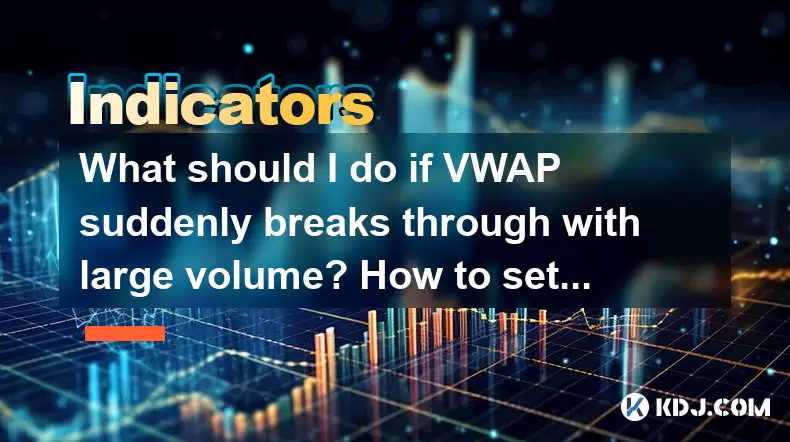-
 Bitcoin
Bitcoin $119000
-2.21% -
 Ethereum
Ethereum $4315
1.01% -
 XRP
XRP $3.151
-3.11% -
 Tether USDt
Tether USDt $0.0000
0.00% -
 BNB
BNB $808.5
-0.71% -
 Solana
Solana $175.8
-4.21% -
 USDC
USDC $0.9999
0.00% -
 Dogecoin
Dogecoin $0.2250
-3.92% -
 TRON
TRON $0.3469
1.77% -
 Cardano
Cardano $0.7818
-3.81% -
 Chainlink
Chainlink $21.47
-2.10% -
 Hyperliquid
Hyperliquid $43.30
-6.81% -
 Stellar
Stellar $0.4370
-2.84% -
 Sui
Sui $3.682
-4.40% -
 Bitcoin Cash
Bitcoin Cash $590.8
2.67% -
 Hedera
Hedera $0.2484
-5.20% -
 Ethena USDe
Ethena USDe $1.001
0.00% -
 Avalanche
Avalanche $23.10
-4.29% -
 Litecoin
Litecoin $119.2
-3.96% -
 Toncoin
Toncoin $3.409
0.90% -
 UNUS SED LEO
UNUS SED LEO $9.016
-1.29% -
 Shiba Inu
Shiba Inu $0.00001304
-3.82% -
 Uniswap
Uniswap $11.18
1.33% -
 Polkadot
Polkadot $3.913
-3.51% -
 Cronos
Cronos $0.1672
-3.08% -
 Dai
Dai $1.000
0.02% -
 Ethena
Ethena $0.7899
-4.70% -
 Bitget Token
Bitget Token $4.400
-1.23% -
 Pepe
Pepe $0.00001132
-5.93% -
 Monero
Monero $257.9
-6.44%
What should I do if VWAP suddenly breaks through with large volume? How to set the stop loss?
When VWAP breaks with large volume in crypto trading, analyze the breakout, assess market sentiment, and set stop losses based on risk tolerance and technical levels.
May 29, 2025 at 12:56 pm

When trading cryptocurrencies, encountering a sudden breakout of the Volume Weighted Average Price (VWAP) with large volume can be a significant event that traders need to respond to effectively. This article will explore what actions you should take if VWAP suddenly breaks through with large volume, and how to set appropriate stop losses to manage your risk.
Understanding VWAP and Its Significance
VWAP, or Volume Weighted Average Price, is a trading benchmark used by investors to gauge the average price a security has traded at throughout the day, based on both volume and price. It's calculated by adding up the dollars traded for every transaction (price multiplied by the number of shares traded) and then dividing by the total shares traded for the day. In the context of cryptocurrencies, VWAP can be used to assess the market's direction and the strength of price movements.
When VWAP is broken with large volume, it often indicates a significant shift in market sentiment. A breakout above VWAP with high volume suggests strong buying pressure, while a breakdown below VWAP with high volume suggests strong selling pressure. Understanding these dynamics is crucial for making informed trading decisions.
Immediate Actions to Take When VWAP Breaks Through
When you notice VWAP breaking through with large volume, your immediate actions should focus on assessing the situation and deciding whether to enter or exit a trade. Here's what you should do:
Analyze the Breakout: Determine whether the breakout is genuine or a false signal. Look for confirmation from other technical indicators such as moving averages, RSI, or MACD. If multiple indicators confirm the breakout, it's more likely to be valid.
Evaluate Market Sentiment: Check the overall market sentiment. Are other cryptocurrencies also experiencing similar breakouts? If so, it could indicate a broader market trend rather than an isolated event.
Assess Your Position: If you're already in a trade, decide whether to hold, add to your position, or exit. If you're not in a trade, consider whether this breakout presents a good entry opportunity.
Monitor Volume: Continue to monitor the volume. Sustained high volume after the breakout can reinforce the validity of the move.
Setting Stop Losses After a VWAP Breakout
Setting an appropriate stop loss is crucial to managing risk, especially after a VWAP breakout. Here's how to set your stop loss effectively:
Determine Your Risk Tolerance: Before setting a stop loss, know your risk tolerance. How much are you willing to lose on this trade?
Use Technical Levels: Place your stop loss just below a significant technical level, such as a recent swing low or below the VWAP line itself if the breakout was upward. For a downward breakout, place the stop loss just above a recent swing high or above the VWAP line.
Consider Volatility: Adjust your stop loss based on the cryptocurrency's volatility. More volatile assets may require wider stop losses to avoid being stopped out prematurely.
Set a Trailing Stop: Once the trade moves in your favor, consider using a trailing stop to lock in profits. A trailing stop adjusts automatically as the price moves, allowing you to capture more gains while still protecting against a reversal.
Adjusting Your Trading Strategy
After a VWAP breakout with large volume, you may need to adjust your trading strategy to capitalize on the new market conditions. Here are some strategies to consider:
Trend Following: If the breakout indicates a new trend, adopt a trend-following strategy. Buy on pullbacks in an uptrend or sell on rallies in a downtrend.
Momentum Trading: If the breakout is accompanied by strong momentum, consider a momentum trading strategy. Enter trades in the direction of the breakout and aim to capture short-term gains.
Reversal Trading: If you believe the breakout is a false signal, prepare for a potential reversal. Look for signs of exhaustion, such as a divergence between price and momentum indicators, and trade accordingly.
Monitoring and Adapting to Market Changes
After taking action following a VWAP breakout, it's essential to continuously monitor the market and be ready to adapt your strategy. Here's how to do that:
Keep an Eye on Volume: Volume is a key indicator of the strength of a move. If volume starts to wane, it could signal that the breakout is losing steam.
Watch for Reversals: Be alert for signs of a reversal, such as a return to the VWAP line or a failure to hold new highs or lows.
Stay Informed: Keep up with news and events that could impact the cryptocurrency market. Unexpected news can quickly change market dynamics and affect your trades.
Review Your Trades: Regularly review your trades to learn from your successes and mistakes. Adjust your strategy based on what you learn.
FAQs
Q: How can I differentiate between a genuine VWAP breakout and a false signal?
A: To differentiate between a genuine VWAP breakout and a false signal, look for confirmation from other technical indicators such as moving averages, RSI, or MACD. Additionally, monitor the volume following the breakout. Sustained high volume can reinforce the validity of the move, while a quick drop in volume may indicate a false breakout.
Q: What should I do if the market reverses shortly after a VWAP breakout?
A: If the market reverses shortly after a VWAP breakout, reassess your position. If you're in a trade, consider exiting to minimize losses. If you're not in a trade, wait for a new setup or a clear trend to develop before entering. Always have a plan for managing reversals, including setting stop losses and trailing stops.
Q: Can VWAP be used effectively for all cryptocurrencies, or are there specific types that it works best for?
A: VWAP can be used effectively for most cryptocurrencies, but it works best for those with higher liquidity and trading volume. Cryptocurrencies with low liquidity may experience more false breakouts and erratic price movements, making VWAP less reliable. Always consider the specific characteristics of the cryptocurrency you're trading when using VWAP.
Q: How often should I adjust my stop loss after entering a trade based on a VWAP breakout?
A: Adjust your stop loss as the trade progresses. Initially, set your stop loss based on your risk tolerance and technical levels. Once the trade moves in your favor, consider using a trailing stop to lock in profits. Adjust your stop loss whenever there are significant changes in market conditions or if the price reaches key technical levels.
Disclaimer:info@kdj.com
The information provided is not trading advice. kdj.com does not assume any responsibility for any investments made based on the information provided in this article. Cryptocurrencies are highly volatile and it is highly recommended that you invest with caution after thorough research!
If you believe that the content used on this website infringes your copyright, please contact us immediately (info@kdj.com) and we will delete it promptly.
- Bitcoin Price Rebound: Michael Saylor's Strategy and the Bullish Outlook
- 2025-08-13 00:50:12
- Dogecoin, Maxi Doge, Explode: Riding the Meme Coin Wave to the Moon (or Valhalla!)
- 2025-08-13 00:50:12
- Ethereum's $20 Billion Rally? Decoding the Latest Moves
- 2025-08-13 00:30:12
- Ancient Coins, Trade Networks, and the Rising Sun: Unearthing Southeast Asia's Economic Past
- 2025-08-13 00:30:12
- Dogecoin, Maxi Doge, and Whales: A New Era for Meme Coins?
- 2025-08-12 23:57:42
- PRC Coin: Revolutionizing Student Housing Payments with PRC Technologies and its Official Website
- 2025-08-12 23:57:42
Related knowledge

What does it mean when the +DI and -DI cross frequently in the DMI indicator but the ADX is flattening?
Aug 11,2025 at 03:15am
Understanding the DMI Indicator ComponentsThe Directional Movement Index (DMI) is a technical analysis tool composed of three lines: the +DI (Positive...

What does it mean when the moving average, MACD, and RSI all send buy signals simultaneously?
Aug 11,2025 at 01:42pm
Understanding the Convergence of Technical IndicatorsWhen the moving average, MACD, and RSI all generate buy signals at the same time, traders interpr...

What does it mean when the price is trading above the SAR indicator but the red dots are densely packed?
Aug 09,2025 at 11:49pm
Understanding the SAR Indicator and Its Visual SignalsThe SAR (Parabolic Stop and Reverse) indicator is a technical analysis tool used primarily to de...

What does it mean when the candlestick chart forms a "Morning Star" but trading volume is sluggish?
Aug 12,2025 at 06:28pm
Understanding the Morning Star Candlestick PatternThe Morning Star is a three-candle bullish reversal pattern commonly observed in cryptocurrency pric...

What does it mean when the RSI indicator moves sideways for an extended period between 40 and 60?
Aug 10,2025 at 08:08am
Understanding the RSI Indicator in Cryptocurrency TradingThe Relative Strength Index (RSI) is a momentum oscillator widely used in cryptocurrency trad...

What does it mean when the MACD histogram continues to shorten but the price reaches a new high?
Aug 09,2025 at 09:29pm
Understanding the MACD Histogram and Its ComponentsThe MACD (Moving Average Convergence Divergence) indicator is a widely used technical analysis tool...

What does it mean when the +DI and -DI cross frequently in the DMI indicator but the ADX is flattening?
Aug 11,2025 at 03:15am
Understanding the DMI Indicator ComponentsThe Directional Movement Index (DMI) is a technical analysis tool composed of three lines: the +DI (Positive...

What does it mean when the moving average, MACD, and RSI all send buy signals simultaneously?
Aug 11,2025 at 01:42pm
Understanding the Convergence of Technical IndicatorsWhen the moving average, MACD, and RSI all generate buy signals at the same time, traders interpr...

What does it mean when the price is trading above the SAR indicator but the red dots are densely packed?
Aug 09,2025 at 11:49pm
Understanding the SAR Indicator and Its Visual SignalsThe SAR (Parabolic Stop and Reverse) indicator is a technical analysis tool used primarily to de...

What does it mean when the candlestick chart forms a "Morning Star" but trading volume is sluggish?
Aug 12,2025 at 06:28pm
Understanding the Morning Star Candlestick PatternThe Morning Star is a three-candle bullish reversal pattern commonly observed in cryptocurrency pric...

What does it mean when the RSI indicator moves sideways for an extended period between 40 and 60?
Aug 10,2025 at 08:08am
Understanding the RSI Indicator in Cryptocurrency TradingThe Relative Strength Index (RSI) is a momentum oscillator widely used in cryptocurrency trad...

What does it mean when the MACD histogram continues to shorten but the price reaches a new high?
Aug 09,2025 at 09:29pm
Understanding the MACD Histogram and Its ComponentsThe MACD (Moving Average Convergence Divergence) indicator is a widely used technical analysis tool...
See all articles

























































































